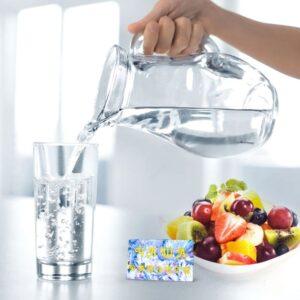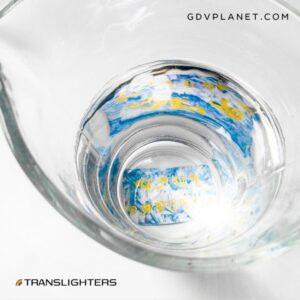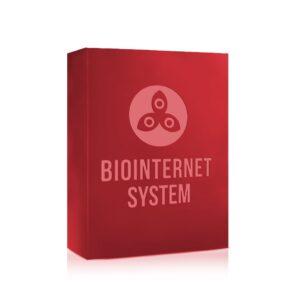The Emerging Science of Water
€18.00
Vladimir Voeikov and Konstantin Korotkov
In this book, we would like to acquaint readers with the emerging new science of water. We were lucky enough to watch (and, as far as possible, to participate) in the development of this trend within the last 10 years. This book is intended to be user-friendly, reading like popular science. We mostly communicated using layman’s language and avoided technical terms. We hope our readers will discover some ideas in this book that piques their interest.
DrK Book Shop
Description
The Emerging Science of Water
Vladimir Voeikov and Konstantin Korotkov
In this book, we would like to acquaint readers with the emerging new science of water. We were lucky enough to watch (and, as far as possible, to participate) in the development of this trend within the last 10 years. This book is intended to be user-friendly, reading like popular science. We mostly communicated using layman’s language and avoided technical terms. We hope our readers will discover some ideas in this book that piques their interest.
Contents
Introduction 5
Part I. New Science of Water 8
Special properties of water 10
The Drama of Jacques Benveniste 22
Neglected Facts about High Dilutions 31
What is the structure of water? 38
“Living water” of Viktor Schauberger 44
Water as a Complex Multicomponent System 65
Water as the Source of Chemical Work: “Burning of Water” 84 T
he Science of High Dilutions 98
Water as receiver and transmitter of information 124
Essay about Homeopathy 150
Water in the XXI Century 152
Water as a Detector of Emotions 164
Water as a Material Matrix for the Consciousness Field of Humankind 170
Part II. Water and our Health 181
Introduction 183
Water and Hygiene 186
When and how should we drink water? 189
What should we drink? 193
What should we drink? 198
Water Treatment Methods 200
Conclusion. 204
Index 205
Cover design by Oleg Bazhenov Editor DARLENE
ISBN-13: 978-1973736820 ISBN-10: 1973736829
korotkov TV
Buying eBooks, You support our Research
Thank you! Light and Love!
The Biointernet Series by Korotkov.TV
The Emerging Science of Water
Introduction
Our notions of physical reality can never be final. We must always be ready to change these notions.
Albert Einstein Water is the basis of life; water is life itself.
One can live a long time without food, but it is impossible to live without water. Rivers, lakes, seas and oceans have fed half of humanity for centuries, and provided contact between peoples. Waterfalls and fountains attract people to the fascinating game of crystal jets. It seems, that after thousands of years of water use, we should now know all about this substance. Science has studied water for more than two hundred years. But, as it turns out, a lot of fundamental questions (that should arise if we look around with open eyes) have not even been considered in classical science.
Here are some of them:
Water evaporates. Sometimes we see evaporating water as a dense fog that gradually disperses and becomes invisible. This is no surprise. No questions arise. We take it for granted. But, why don’t we ask why dissipating water vapors start to thicken to form clouds? Water molecules represent water vapors. A cloud is more than just liquid water. Is a cloud just a cloud? Reconsider how — a water vapor becoming thicker instead of dispersing—is counter intuitive. We don’t give it a second thought, simply because we’re accustomed to the phenomenon!
Some clouds turn into thunderclouds and become the source of a tremendous quantity of electricity manifested in the form of lightning. It is well known that water molecules may be ionized, but only if they are hit with UV-photons. It is obvious that density of UV radiation in the clouds is negligible. Why then, does so much water ionize in thunderclouds, allowing for the accumulation of the tremendous quantity of electrons needed for a lightning? Classical science cannot provide a definite answer to this question.
OK, however we understand the mechanism of electrical accumulation in thunderclouds and how lightning strikes the ground, we perceive the potential difference between the ground and the clouds. But then, why do discharges occur between the
Part 1
clouds? Where does the potential difference come from in these cases?
How does water rise up the trunk of a tree, sometimes at the height of multi-story building? Explanations using the capillary effect are inconsistent, which may be demonstrated by a simple calculation.
What about the healing power of “special” water treatments — with magnets, minerals including gemstones, through incantations and mantras? Are these superstitions and legends, or something real?
What is so special in the waters of springs and sacred sources? How did the water appear on Earth?
Why is water detected on all planets (at least in the form of ice) and in space?
This list could go on, but classical science dismissively shrugs off such “trifles.” But we know that often the new directions in science arise from consideration of just such little things. At the end of the XIXth century, the picture of the world was clear and understandable. Science was mainly formed and no one was able to imagine that the world was on the verge of quantum revolution.
The same situation is taking place now. At the beginning of the XXIst century, new previously unpredictable technologies are being developed, and a new scientific paradigm—a system of ideas about the world—matures gradually.
In biology and medicine, this marks the transition from the molecular to the quantum level; in physics, this marks the development of quantum non-locality and new ideas about the structure of the Universe; in the natural sciences, the inclusion of Consciousness in the world picture is marked. The new science of water is an essential part of all these areas.
Let us introduce ourselves.
Voeikov Vladimir, Doctor of Biological Sciences, Professor. Professor of the Faculty of Biology, Lomonosov Moscow State University; author of over 400 scientific articles. Prigogine Gold medal 2013 winner. For many years, worked closely with Fritz Popp, then with Emilio Del Guidice.
Konstantin Korotkov G., Doctor of Science professor. Professor of the Department of the St. Petersburg State University of Information Technologies, Mechanics and Optics; leading
researcher of St. Petersburg Research Institute of Physical Culture and Sport; President of the International Union of Medical and Applied Bioelectrography; author of more than 400 scientific articles, 10 books, translated into many European languages.
In this book, we would like to acquaint readers with the emerging new science of water. We were lucky enough to watch (and, as far as possible, to participate) in the development of this trend within the last 10 years. Through long conversations with eminent scientists: Emilio Del Guidice, Gerald Pollack, Masarusaro Emoto, Jacques Benveniste, Fritz Popp, Rustum Roy, Harry Schwartz, and many others, this endeavor was facilitated by acquaintances. Thanks to them, we owe a debt of gratitude for a new vision of nature and life. Many of these scientists were in Russia at the annual international congress, “Science, Information and Spirit,” held in St. Petersburg each year in early July (www.sis- congress.com).
We began writing this book a few years ago. But only after attending the Water Congress in Bulgaria in 2016 (www.waterconf.org), did all the ideas beautifully fall into place, like the pieces in a multicolored puzzle. For the next several months, we came together, polished these ideas, and are pleased to present the fruits of our labors to our dear readers.
This book is intended to be user-friendly, reading like popular science. We mostly communicated using layman’s language and avoided technical terms. Sometimes, keeping it simple was not always possible, especially when discussing new scientific ideas. We did not include a detailed bibliography, but only the most essential—as data is easy to find on the Internet. We hope our readers will discover some ideas in this book that piques their interest. This is an excellent book to read in the evening, or while lying in bed, so as to draw one quickly into a dream state.
New Science of Water
Part 1
Special properties of water
Water, thou hast no taste, no color, no odor; canst not be defined, art relished while ever mysterious. Not necessary to life, but rather life itself, thou fillest us with a gratification that exceeds the delight of the senses.
Antoine de Saint-Exupery Wind, Sand, and Stars, 1939
We can safely state, that biological life on Earth depends on the anomalous properties of water. Without it, life, as we know it, would have been impossible. Water possesses a whole lot of properties that set it apart from all other substances on Earth. The portal of the famous English physical chemist, Martin Chaplin, dedicated to water, contains the most complete information on water systems research (http://www1.lsbu.ac.uk/water/). He lists 72 “anomalous” properties of water, sharply distinguishing water from any other substances known to us. Every interested person is encouraged to study Chaplin’s encyclopedia of water. But here, in this book, we review just a handful of properties on his list.
The Anomaly of Density
The most well known anomalous property of water is related to its density being dependent upon temperature. The density of ice turns out to be less than the density of water, whereas, for all other substances, the density of crystals is greater than the density of liquid. This property of water makes it possible to preserve liquid water under a layer of ice.
If water behaved like other substances, ice would sink in liquid water and the water would freeze throughout the entire volume of the water body. In this case, gradually, the northern seas and oceans would turn into solid ice, which the summer sun would be unable to melt during the brief periods of seasonal warmth. If water behaved like other substances, the climate of the whole planet would become far more harsh and dry. By the way, we still do not know why the glacial periods happened or what part they
The Emerging Science of Water played in the evolution of life on Earth.
Not only is ice less dense than liquid water, but also liquid water
below 4oC is less dense then at 4oC, the temperature where water density is the highest. This is also an anomalous property of water.
The low density of ice, and the maximum density of water reached at 4oC, results in the following:
(1) Prior to freezing, the whole volume of water—not only its surface—must be close to 0oC,
(2) Freezing of rivers, lakes and oceans takes place from top to bottom, thus isolating the water from further freezing, reflecting the sunshine back into the space, which allows quick thawing,
(3) The density is regulated by thermal convection, which leads to seasonal changes in the temperature of deep waters.
Temperature dependence of water density.
The Anomaly of Surface Tension
Among the unusual properties of water, one of the most amazing is its extremely high surface tension of 0.073 N/m (20°C). Of all fluids, only mercury has a higher surface tension. Thanks to the high surface tension of water, some items being much more dense than water, may not sink in it immediately (e.g., a carefully laid steel needle). Many insects (water strider, spring-tails, and others) not only move on the surface of the water, but also take off from the surface into the air and “land” back on it as if it were firm ground. Moreover, living things have even adapted for use, the inner side of the water’s surface. Mosquito larvae hang on it—with the help of non-wettable bristles—and small snails (mollusks and coils) crawl on its underwater surface in search of prey.
High surface tension allows water to take on a spherical shape in free fall or in a state of weightlessness: this geometric shape has minimal surface for a given volume.
The high surface tension of water is usually explained by different states of hydrogen bonds between adjacent water molecules present at the air-water interface and others being in bulk water and surrounded with water molecules from all the sides. However, it seems doubtful that hydrogen bonds between water molecules forming the surface monolayer, having the thickness of about 0,3 nm (0,00000003 mm), can increase so dramatically that this monolayer can hold a metal coin or a needle weighting fractions of a gram, or even more. Later, when we come to a new understanding of water properties and structure, we’ll discover a much more realistic explanation relating to the surprisingly high surface tension of water.
The Anomaly of Heat Capacity
The specific heat capacity of a substance is the amount of heat required to increase the temperature of one gram or one mole of a substance by 1 degree. There are several anomalies related to the heat capacity of water.
For the majority of substances, the heat capacity of a liquid increases only slightly (by no more than 10%) after the crystal melts. But water is entirely different in this respect. After the melting of ice, the heat capacity changes from 9 to 18 cal/ (mol·degree), i.e. with a twofold increase! No other substance manifests such a big change in heat capacity.
Water has the highest heat capacity among liquids, except for ammonia. A high value of heat capacity and high water content in organisms contribute to their thermal regulation, preventing local fluctuations of temperature. The high heat capacity of oceans and seas turns them into accumulators of heat. The temperature fluctuations of seas equal only one-third of the temperature fluctuations on dry land. This makes our climate more moderate and allows the ocean currents, such as the Gulf Stream, to transfer the heat of the tropics to the North-West of Europe.
Another striking anomaly related to the heat capacity of water, is that it has a minimal value between 36°C and 37°C. At temperatures below 36°C, the specific heat capacity of water decreases while temperature increases (unlike all other liquids) and above 37°C, as in all other liquids, it increases with heating.
Until now, there is no commonly accepted explanation for this phenomenon. What is striking is that this temperature range is characteristic of the normal body temperature of warm-blooded animals and human beings. Probably, this is not a coincidence.
Other Special Properties of Water
Water is an excellent solvent—thanks to its polarity, high dielectric constant, and the small size of water molecules— especially for polar and ionic substances and salts. This is why it is so difficult to obtain genuinely pure water (e.g. with less than 5·10- 9 of admixtures). Ice, on the other hand, is a very poor solvent, and why it is used in water purification (e.g. for de-gasifying) through using successive cycles of freezing and thawing.
korotkov TV
Buying eBooks, You support our Research
Thank you! Light and Love!
The Biointernet Series by Korotkov.TV











Reviews
There are no reviews yet.